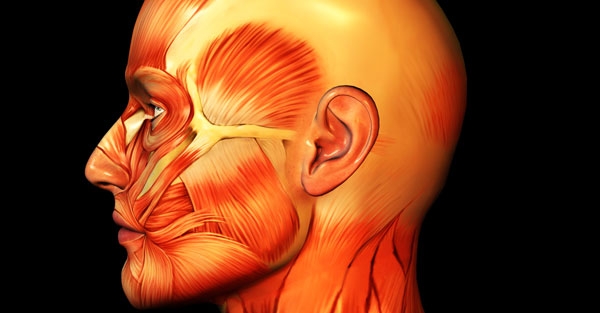The mastoid process, one of the four integral parts of the temporal bone, is the prominent rounded knob behind the ear. The knob occurs behind both the ears. The temporal bones are located on the sides of the human skull. The mastoid process is found on the inferior and the posterior border of the bone.
The process features scores of air-filled spaces, which are called mastoid air cells or mastoid sinus. The spongy air cells are located on the back of the middle ear. The middle ear is a small cavity within the temporal bone. The size and the number of the cells differ from person to person. A mucous membrane lines the mastoid sinus. Small cells may be filled with bone marrow, whereas the big one contains air. The sinus, connected to the middle ear, improves resonance in the ear and sound amplification and perception. The mastoid process also helps in maintaining balance of the head.
The skin over the process is smooth and fine. The skin does not have hairs either. The process is more prominent in adults than in children. It is less prominent in men than in women. The knob in old people is the largest. The most interesting fact about the process is that a blow or fall cannot fracture it. However, there are cases of bullet-induced fractures in the process.
Mastoiditis
Inflammation / infection of mastoid sinus or the mastoid bone is called mastoiditis that develops in five stages:
- hyperemia of the mastoid sinus’ mucosal lining,
- exudation and transudation of pus and / or fluid within the sinuses,
- bone necrosis,
- loss of the cell wall and
- spreading of inflammation to bordering areas.
Diagnosing Mastoiditis
An x-ray of skull, a CT scan of the head or CT scan of the ear will help in diagnosing mastoid sinus infection if no symptoms were found during the examination of patient’s head. If signs of intracranial problems or brain abscess are found, doctor may ask for a computed tomography scan (CT scan) or magnetic resonance imaging (MRI). Doctor may also recommend blood and culture tests.
Doctor may use otoscope to examine eardrums and outer ears of children. S/he may also perform a physical examination and go through medical history of the patient. So carry all records while visiting the doctor.
Doctors may perform tympanometry test to check functioning of the middle ear, including pressure changes. The test requires patients to sit still. Thus, it is difficult to perform the test on children.








